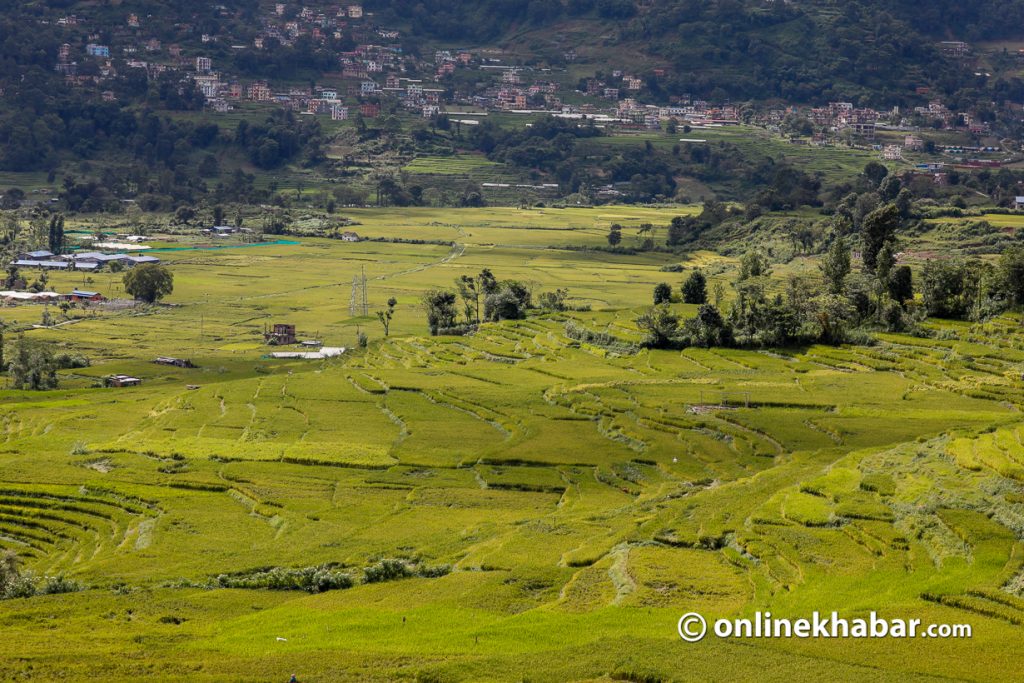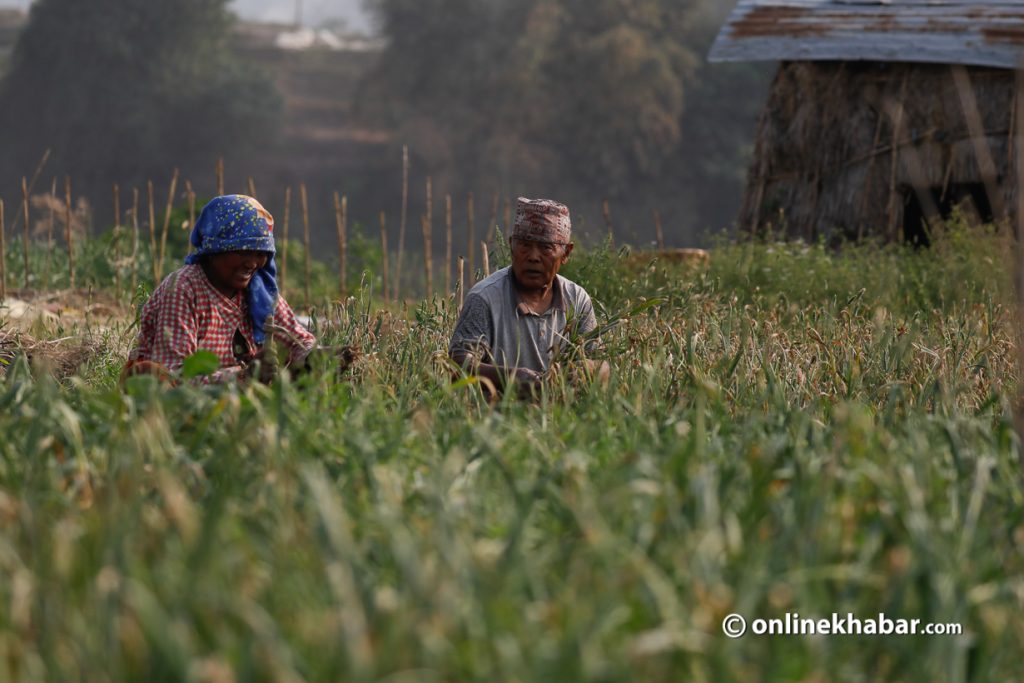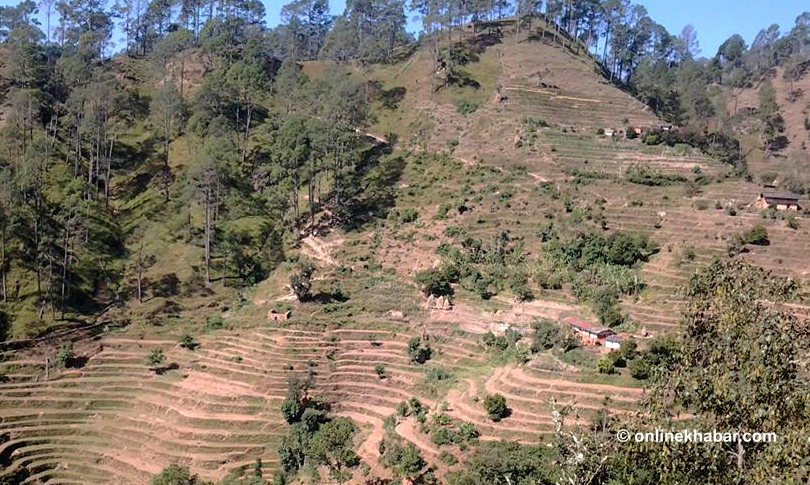The Nepal government’s announcement to establish a ‘land bank’ in 300 local units in FY 2020/21 was a matter of shock than a surprise for many as it was out when the newly formed Land Commission was preparing to “resolve” ages-old land-related problems. The debate surfaced for and against it in tandem with the effort to provide land to landless without substantive efforts to dissect inherent problems or stitch opportunities about the need and appropriateness of the land bank.
The government believes that the proposed ‘land bank’ programme will reduce the trend of abandoning arable land and substantively increase production. However, the contribution of the policy towards equity and efficiency remains unknown as the government did not pilot the project to examine its applicability in the existing local realities. It has become urgent to debunk the myths used for the programme and to show how secured land access is critical to protect livelihoods by first addressing the question of landlessness, informalities, guthis, the land beyond ceiling sand tenancy land separation.
The failed idea
According to United Nations Food and Agriculture Office (FAO), land bank functions for the acquisition, sale or lease of agricultural land. It has been largely implemented in Western European countries as a land consolidation instrument since the 2000s, with the support of FAO. But, the results are not promising. According to FAO, farm size, land fragmentation and land abandonment are the key elements to be considered for the application of land bank.
These are necessary but not sufficient in the case of Nepal, where the land question broadly revolves around land use pattern, land access, land tenure security, land ownership and land governance, which are out of the radar of the land banks.
It has been criticised for being designed to divert the real land reform discourse in Nepal in the past. Despite the strong disagreements from the civil society group, this year too, the government announced to establish at least 50 branches in each of seven provinces without any detailed conceptual policy framework. This programme contradicts the work of the current National Land Commission. Two contradictory programmes create a lot of confusion about the government’s land reform approach.
Anti-poverty or anti-poor?

The importance of land rights for sustainable development is recognised to achieve the 2030 agenda of global development. In a fragile economy like Nepal, the land is more than a means for livelihood. Nepal no longer remains an agrarian country, that is why land governance has broader implications beyond the sphere of agricultural production. Thus, it is important to take into consideration the way in which access to land is regulated and defined by the specific policy measures.
The ‘land bank’ neither considers tenure security nor advances land access nor generates economic benefit for landless and may perpetuate poverty, injustice and marginalisation by structurally facilitating land tenure concentration among landed and corporate families. The land bank or any other programmes targeted for land reform in our context are expected to facilitate the transformation of the system, practice and structure that govern land by restructuring the land tenure arrangements, redistributing agricultural land and shifting power to marginalised, poor and landless in line with social justice principles. But, the government attempted it as a mere technical intervention to resolve the land management issues rather than as the element of a broader land reform process to address the inherent land inequality.
The government itself is not clear about how the land bank policy can reduce existing problems and avoid future unequal concentration of landholdings under a distorted policy regime. The land bank programme seems to be designed as a mere technical solution to land management on a political or bureaucratic whim than as the element of a broader land reform process to address the inherent land inequality. That is why the individuals who are targeted to benefit from the programme are often politically powerful.
The policy puzzle

Land reform efforts of the government lack an appropriate and sustainable conceptual model. Therefore, multiple institutions, programmes and projects initiated by the government – often with overlapping competencies, and responsibilities, contradictory approaches and high resource requirements – focus on the symptoms than addressing the underlying causes of land inequality. Thus, the land reform process in Nepal has become messy.
This is an opportune moment to review the land reform programme including land bank to envision the opportunities or irreversible consequences of such processes, which may have longer-term policy implications in the context where around 1.3 million people are legally landless and when it is all unknown about the land available for land banking. The latest changes in the land policies support the land market and seek to achieve increased agricultural production with no land ownership. In most cases, they misleadingly use the language of land rights to safeguard the control of the elites over land and promote capitalism through the creation of land markets.
The concept of a land bank is opposite to the government’s law that prohibits keeping land fallow and the provision for discouraging the absentee land ownership of the constitution [Article 51E]. In this context, extra structures with a huge investment of state resources are not the real need. Rather, the government needs to support Land Commission in providing land for housing and agriculture to the people deprived of land rights immediately.
The land bank programme is destined to fail not only from its design but also from the interplay of rapidly changing social structure, the capacity of the government, peoples’ needs and spatial geo-specificities. The failure of the so-called land reform programmes one after another calls for reconceptualising the land question and redesigning the overall land reform agenda to achieve sustainable development in Nepal.




















